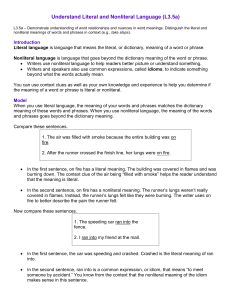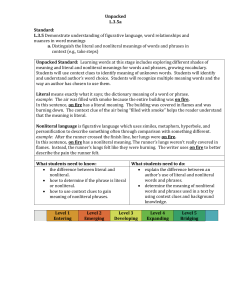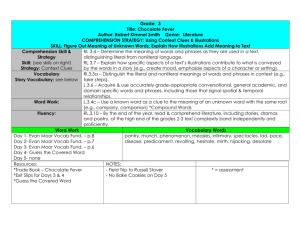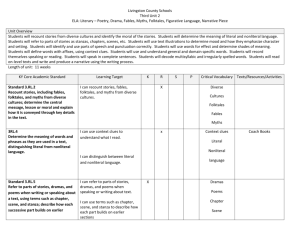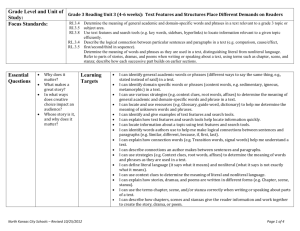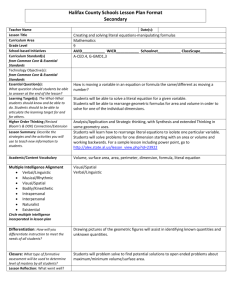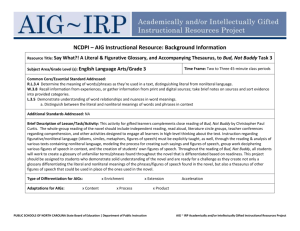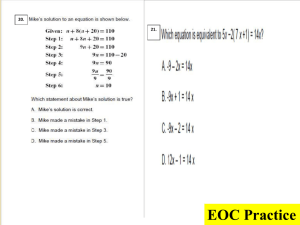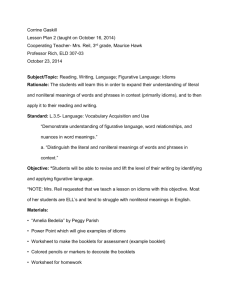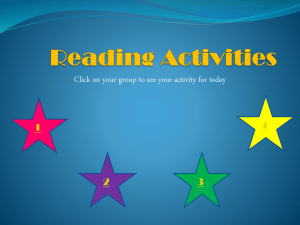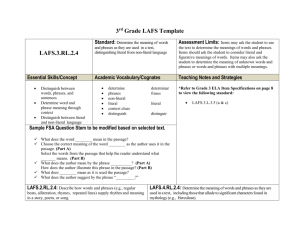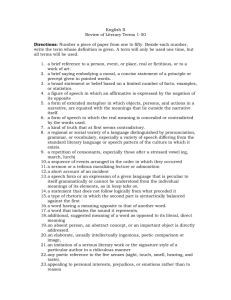Unpacked RL.3.4
advertisement
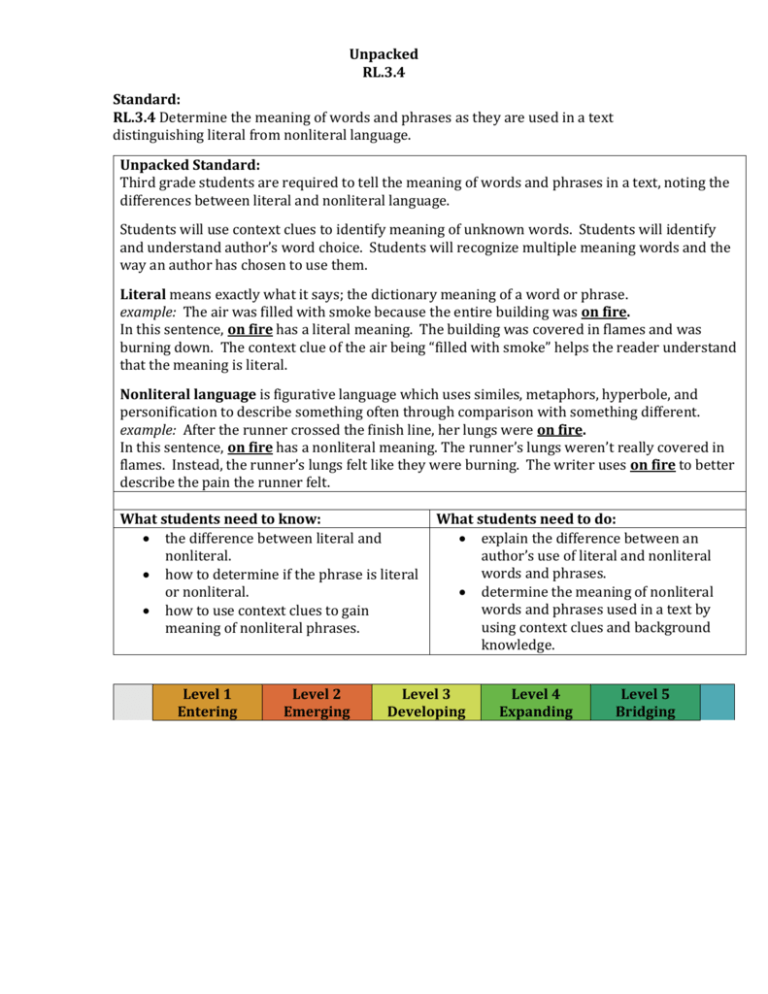
Unpacked RL.3.4 Standard: RL.3.4 Determine the meaning of words and phrases as they are used in a text distinguishing literal from nonliteral language. Unpacked Standard: Third grade students are required to tell the meaning of words and phrases in a text, noting the differences between literal and nonliteral language. Students will use context clues to identify meaning of unknown words. Students will identify and understand author’s word choice. Students will recognize multiple meaning words and the way an author has chosen to use them. Literal means exactly what it says; the dictionary meaning of a word or phrase. example: The air was filled with smoke because the entire building was on fire. In this sentence, on fire has a literal meaning. The building was covered in flames and was burning down. The context clue of the air being “filled with smoke” helps the reader understand that the meaning is literal. Nonliteral language is figurative language which uses similes, metaphors, hyperbole, and personification to describe something often through comparison with something different. example: After the runner crossed the finish line, her lungs were on fire. In this sentence, on fire has a nonliteral meaning. The runner’s lungs weren’t really covered in flames. Instead, the runner’s lungs felt like they were burning. The writer uses on fire to better describe the pain the runner felt. What students need to know: the difference between literal and nonliteral. how to determine if the phrase is literal or nonliteral. how to use context clues to gain meaning of nonliteral phrases. Level 1 Entering Level 2 Emerging What students need to do: explain the difference between an author’s use of literal and nonliteral words and phrases. determine the meaning of nonliteral words and phrases used in a text by using context clues and background knowledge. Level 3 Developing Level 4 Expanding Level 5 Bridging With teacher support, determine the meaning of words and phrases as they are used in a text by matching the highlighted text (word and text clues) to pictures distinguishing literal from nonliteral language. With a partner, determine the meaning of words and phrases as they are used in a text by matching the highlighted (word and text clues) to pictures With a partner, determine the meaning of words and phrases as they are used in a text by matching highlighted words to highlighted text literal from nonliteral language. literal from nonliteral language. distinguishing distinguishing With a partner, determine the meaning of words and phrases as they are used in a text by highlighting the word and matching it to the highlighted meaning clues in the text distinguishing literal from nonliteral language With a partner, determine the meaning of words and phrases as they are used in a text by highlighting an example of literal in one color and nonliteral in another color along with clues used to determine the meanings. ELD Standard: English language learners communicate information, ideas and concepts necessary for academic success in the content of Language Arts. Level 6 Reaching Domain: Reading Unpacked RL.3.4
